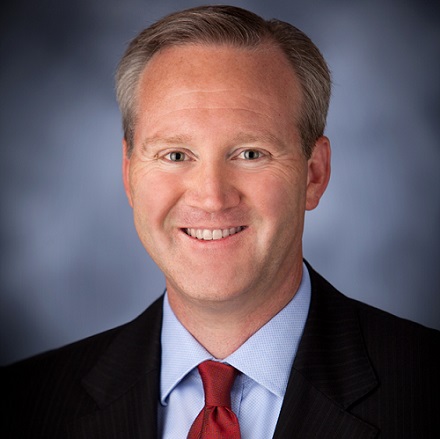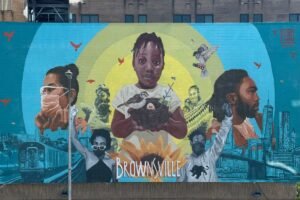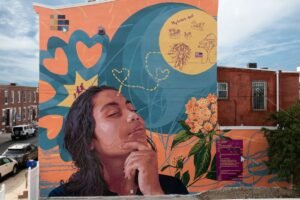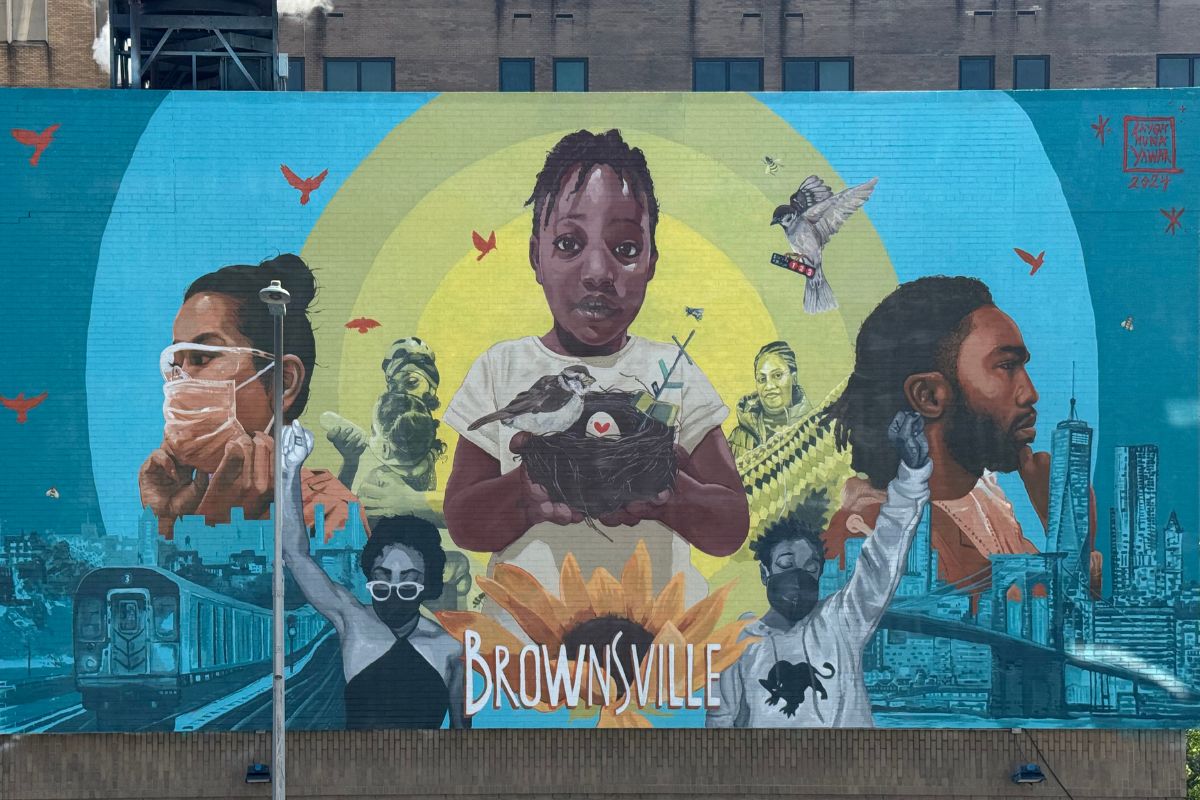
In the vision of Jeff Yost of the Nebraska Community Foundation, the development of rural America is more than a challenge of money. Many rural advocates have been asking—and hoping—for American foundations, largely headquartered and focused in urban areas, to rediscover the rural roots of their wealth, to remember the 30 million Americans who live in rural communities, to take note of the lower incomes and higher poverty they endure, and to respond by devoting a larger cut of their grant dollars to nonmetropolitan regions.
Yost wouldn’t argue against more philanthropic assets flowing into the rural communities his foundation serves, but that isn’t the totality of his vision of rural philanthropy by a long shot. Emphasizing the development of affiliated funds linked to and serviced by the statewide community foundation he runs, Yost says that they’re trying to do something different in Nebraska, to build a “system [that] is all about helping communities to help themselves.”
This framework runs counter to the history of rural America, where political power and financial resources have largely seeped out of rural communities. In the currently popular “metrocities” framework that has captured the imaginations of many public policymakers and foundation grantmakers, investment should be targeted to perhaps 100 or so metropolitan areas nationwide, and their growth and development will somehow spill over and benefit rural communities.
That’s the theory, anyway, though some don’t really have much faith in rural at all. One top foundation leader who will remain nameless for the moment suggested to his colleagues recently, apparently not in jest, that the best thing foundations could do for rural Americans would be to provide them with one-way bus tickets to cities. Although former Montana Senator Max Baucus famously challenged rural funders (oddly, not others) some years ago to double their rural grantmaking, he also asked those foundations to add rural people to their boards of trustees. The social and cultural distance of foundations from rural America that leads to notions like bus tickets to cities might be dissipated if rural people were on foundation boards to challenge such fatuousness.
But in general, rural people aren’t leading big urban foundations, which leads Yost and others to think about generating a kind of philanthropy that “helps people build and sustain their hometowns” by “allowing community leaders to have a tremendous amount of discretion” over how they raise and deploy their own resources. Rural areas have often suffered a diminution of control over their own destinies. Yost would look to outside foundations to invest in long-term capacity building, which he defines around a handful of connected elements:
- Leadership development
- “Discretionary capital, so that leaders have resources they can apply”
- “Being willing to think about the future in different ways than we have in the past”
Yost makes it clear that if the Nebraska Community Foundation is to be involved in building capacity, “it can’t be me superimposing the vision.” He sees the foundation as facilitating a community-level conversation about the deployment of philanthropic resources raised through the community foundation’s affiliated funds. “If there is a sustained commitment to community capacity building,” Yost explains, “it can really change the narrative.” In that light, Yost thinks of himself and talks about his role as a “community development practitioner,” and the Nebraska Community Foundation as “a community development institution that helps community leaders use philanthropy as a tool to build and sustain their hometowns.”
To date, the statistics and metrics describing the quantitative measurements of the Nebraska Community Foundation’s accomplishments reveal a presence across much of the state:
- 223 affiliated funds serving 254 Nebraska communities in 78 counties since the first affiliated fund was established in 1994
- 286 planned gifts totaling $52.5 million to benefit Nebraska’s communities and organizations
- $222.7 million reinvested since 1994 ($126.1 million in the last five years)
- 35,728 contributions in the last five years
- As of December 2014, 101 affiliated funds building endowments
Given his focus on community capacity-building rather than just raising and allocating philanthropic resources, these metrics don’t adequately convey the narrative of what Yost and the community foundation are trying to accomplish. With 532 incorporated places in Nebraska, Yost is clear that the goal of the foundation is not to have a presence—or an affiliated fund—in each of those communities.
“Our whole system is based on a willing partner principle,” Yost says. “We’re interested in working with people who are willing to work with us…we try to remove ourselves from being all things to all people.” When it comes to the relationship of foundations to communities, “being all things to all people” typically boils down to a simple transaction: The foundation raises and supplies the money that the community gets to use. Yost’s capacity-building model, he says, relies on a different dynamic between the foundation and the communities that are creating and sustaining affiliated funds.
In the Nebraska Community Foundation’s search for willing partners, Yost appears to favor a framework drawn from the asset-based community development concepts of John McKnight. As explained in a working paper posted on the webpage of the Asset Based Community Development Institute, the framework “builds on the assets that are already found in the community and mobilizes individuals, associations, and institutions to come together to build on their assets—not concentrate on their needs.” In that sense, Yost’s perspective is clear. He doesn’t talk about what is lacking in rural areas and doesn’t bemoan rural needs. Rather, as he told us, “if you want to build robust rural places, you have to invest in the tools.”
Sign up for our free newsletters
Subscribe to NPQ's newsletters to have our top stories delivered directly to your inbox.
By signing up, you agree to our privacy policy and terms of use, and to receive messages from NPQ and our partners.
Yost cites McKnight’s “Four-Legged Stool” paper, written for the Kettering Foundation, about the necessity of strengthening the four legs of society—the three that are “hierarchical, managed institutions” (government, business, nonprofits), and a fourth, popular citizen associations, that McKnight describes as not institutional. Essentially, in what is usually a three-legged stool (the third being civil society), McKnight separates hierarchical nonprofits from non-hierarchical associations:
“The development of our major not-for-profit institutions has not only created a form distinctive from associations, they have also had the often unintended side effect of diminishing the power of many associations or even replacing the groups that spawned them.”
Yost articulates a similar concept, arguing, “As nonprofits have become larger and more professionalized, they have become more removed and distant from community.” By getting engagement from more than just paid staff, Yost explains, when projects succeed, it “builds their pride in terms of what’s ultimately possible in their communities.” While he doesn’t see volunteerism as a “panacea,” Yost believes that “there is enormous potential for how to maximize the use of volunteerism as opposed to having all of these services professionalized.”
{loadmodule mod_banners,Ads for Advertisers}
In the case of the Nebraska Community Foundation, Yost says, the foundation isn’t the grantmaker. “All of the grants come from the affiliated funds,” Yost explains, and as a consequence, “the conversation is different.” The foundation, he says, is the “connective tissue for a lot of things.” He and his staff work to facilitate community dialogues around the question, “Why here; why do we want to live and work and raise our families here?” The answers come from the ways community leaders answer the questions as to what might be done to make their communities better and more attractive, in contrast to a more typical philanthropic approach that would have leaders speak to issues and needs and have foundation professionals respond, with attendant philanthropic concerns of risk-aversion and centralized control. Putting the issue of money front and center, Yost says, “may be counter to helping people build their places, or at least not helpful enough.”
As a result, Yost’s concept for the operations of the Nebraska Community Foundation, he explains, isn’t about the money alone. In fact, he says, “there are very few ideas that died because of lack of capital…they have usually died from some other reason.” He doesn’t dismiss the importance of money for making things happen, but he suggests that there are four kinds of resources necessary in community development—money, vision, leadership, and engagement. It’s not hard to see that Yost defines the Nebraska Community Foundation less as a grantmaker than as a facilitator of community development in Nebraska’s rural communities. He says that he and his colleagues “have tried to become really good at helping facilitate group dialogue and pushing on questions of participation and inclusion.”
With 225 affiliated funds, Yost and his 16 staff (at the time he spoke to NPQ, he was in the process of hiring two more) are working in 250 places in Nebraska. He says that there are 1,800 volunteers working with these affiliated funds, engaged in training, peer learning, and community problem solving. “We don’t necessarily have an agenda,” Yost says, other than the values built into the foundation’s community development model drawing on the McKnight ABCD framework. He thinks that the approach that the foundation is pursuing can work elsewhere, emphasizing a few key variables:
- “The only people who can build a community are those who live, work, and sleep there.”
- “No matter where you are, one of the most important things is how you foment and sustain engagement and participation…and that’s by asking people to do something…and ultimately invest in what they help to build.”
- A foundation can be a “value-added partner to build discretionary and endowed assets in a community.”
In practical terms, it is a vision of helping community leaders with the “dynamics, fundraising and gift planning, helping affiliated fund leaders to invest $50,000 for a town of 1,000 people…and trying to give community leaders the courage and freedom to try different things.”
Would Yost’s Tocquevillian view of a community foundation work as well outside of Nebraska? Pragmatically, Yost acknowledges that there are differences in the “Nebraska context,” such as less than three percent unemployment (as of December, preliminary estimates put unemployment at 2.9 percent) and, in many localities, openness to the immigration of new Americans to help address workforce shortages. The population is much more white than that of the U.S., 89.7 percent, only 4.8 percent black (four-fifths of whom live in non-rural Omaha) compared to 13.2 percent nationwide. The foreign-born population of Nebraska is a tiny 6.3 percent, less than half the proportion for the entire U.S. Yost doesn’t fool himself or anyone else to suggest that the Nebraska Community Foundation concept can work every place in the state, much less in rural communities elsewhere, particularly where the socioeconomic gaps and divisions may be deeper and wider.
Nonetheless, it is a human development as well as a community development concept that guides Yost. In language befitting a community development planner, Yost explains that “the highest and best use of the Nebraska Community Foundation is to help affiliated funds develop unrestricted assets for” the geography that each affiliated fund serves. The Foundation’s website says that there are 254 affiliated funds operating in 78 Nebraska counties, with products such as the afterschool enrichment programs in Verdigre, the welding and machine shop skills training in McCook, and the Entrepreneurship Investigation Camp in Shickley. All of the funds are predicated on local donors generating capital for the funds, through cash donations, gifts of stock, IRA rollover donations, and bequests.
If it were only money at question, even with thoughts of a much-ballyhooed multitrillion-dollar intergenerational transfer of wealth in the works, it would be hard to imagine these rural affiliated funds would mean all that much. But that isn’t how Yost measures the success of these over 200 affiliated funds. He is looking at them as the asset-based building blocks of rural community revival, the mechanisms and venues for the non-hierarchical, community-based problem-solving that he believes rebuilds the civil society of rural communities, not simply 501(c)(3) charities, but the volunteer-based associations that exist in healthy communities and are frequently tattered or nonexistent in troubled communities. These affiliated funds aren’t taking the place of government grants nor are they supplanting the philanthropy that could and should support rural communities from big foundations. Rather, with small resources debated and distributed by community leaders, they are, in Yost’s conception, arenas for the practice of democracy in rural communities.












